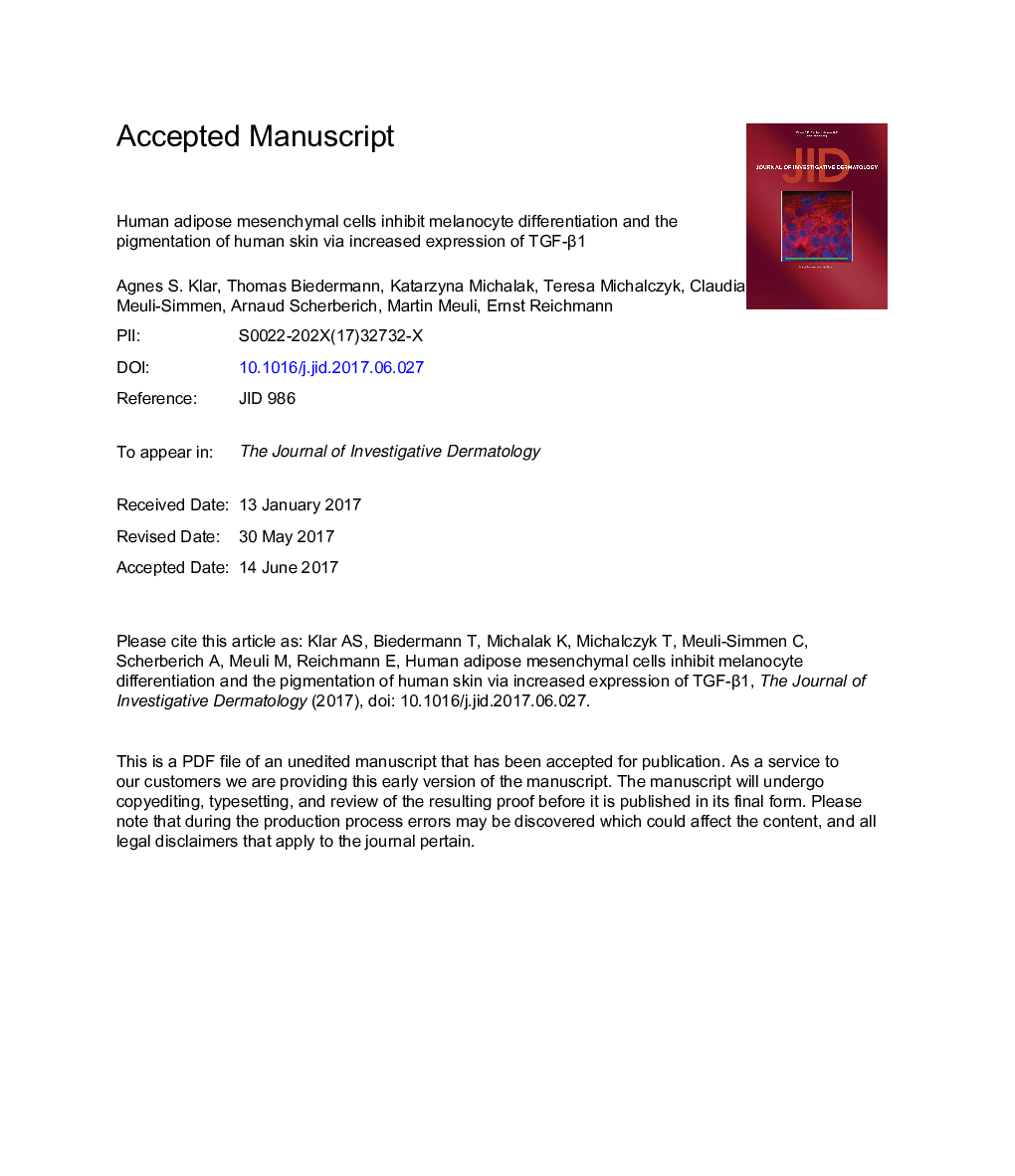| Article ID | Journal | Published Year | Pages | File Type |
|---|---|---|---|---|
| 8716271 | Journal of Investigative Dermatology | 2017 | 28 Pages |
Abstract
There is accumulating evidence that interactions between epidermal melanocytes and stromal cells play an important role in the regulation of skin pigmentation. In this study we established a pigmented dermo-epidermal skin model, melDESS, of human origin to investigate the effects of distinct stromal cells on melanogenesis. melDESS is a complex, clinically relevant skin equivalent composed of an epidermis containing both melanocytes and keratinocytes. Its dermal compartment consists either of adipose tissue-derived stromal cells, dermal fibroblasts (Fbs), or a mixture of both cell types. These skin substitutes were transplanted for 5 weeks on the backs of immuno-incompetent rats and analyzed. Gene expression and Western blot analyses showed a significantly higher expression of transforming growth factor-β1 by adipose tissue-derived stromal cells compared with dermal Fbs. In addition, we showed that melanocytes responded to the increased levels of transforming growth factor-β1 by down-regulating the expression of key melanogenic enzymes such as tyrosinase. This caused decreased melanin synthesis and, consequently, greatly reduced pigmentation of melDESS. The conclusions are of utmost clinical relevance, namely that adipose tissue-derived stromal cells derived from the hypodermis fail to appropriately interact with epidermal melanocytes, thus preventing the sustainable restoration of the patient's native skin color in bioengineered skin grafts.
Related Topics
Health Sciences
Medicine and Dentistry
Dermatology
Authors
Agnes S. Klar, Thomas Biedermann, Katarzyna Michalak, Teresa Michalczyk, Claudia Meuli-Simmen, Arnaud Scherberich, Martin Meuli, Ernst Reichmann,
